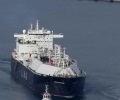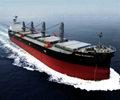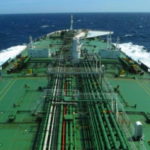Australian LNG exports most vulnerable to coronavirus disruptions: analysts

Australian LNG exports are most exposed to any potential cargo cancellations by Chinese buyers, on account of the ongoing coronavirus outbreak and deteriorating gas demand, although January volumes were unaffected, analysts said.
The view comes on the back of Australia’s emergence as the world’s largest exporter of LNG on an annual basis last year overtaking Qatar. Overall, Australia also took over as the largest natural gas supplier to China in 2019 after toppling Central Asia, counting both seaborne and pipeline gas supplies. It was the second largest supplier in 2018.
China’s state-run CNOOC, the country’s largest LNG importer, declared force majeure last week amid concerns that more Chinese LNG importers could back away from supply contracts. This is particularly concerning for Australian suppliers who largely supply to China on long-term contracts.
No vessels were seen to be unduly delayed by being held at sea in January with 41 Australian cargoes unloaded in China during the month compared to 40 in November and 35 in December, energy consultancy EnergyQuest said Monday.
It said that CNOOC has contracts with Shell’s QCLNG at the Port of Gladstone in Queensland, Australia. QCLNG, as well as its neighboring Origin-ConocoPhillips’ Australia Pacific LNG which are Australia’s most vulnerable LNG projects to any demand shocks stemming from the outbreak, EnergyQuest noted.
“China is an incredibly important buyer of Australian LNG. In January, 36% of Australian exports went to China, just behind volumes to Japan. The east coast projects are most exposed to China,” EnergyQuest chief executive Graeme Bethune said. “Notwithstanding these market shocks, it was pretty much business as usual for the Australian LNG projects in January.”
“The percentage of output delivered to China in January was 85% for APLNG and 67% for QCLNG. Most other projects also have significant exposure: Pluto 42%, Gorgon 38%, Ichthys 27%, NWS 25%, Darwin 24%, GLNG 24%. Wheastone only had 9% and Prelude none,” the consultancy said.
Australian gas producer Woodside, one of CNOOC’s biggest suppliers, has not received a force majeure notification. “Woodside is closely monitoring for potential impacts on the market,” a company spokesperson said. Oil major Shell declined to comment.
APLNG did not immediately respond to queries on the impact of the virus outbreak on Chinese demand.
“Australian cargoes are likely to be hit hardest by force majeure declarations as they are some of the most expensive supplies to China. Australia also accounts for just under half of Chinese imports,” shipbroker Poten & Partners said in a report late Friday.
It said China bought an estimated 13 million mt of spot and short-term cargoes in 2019, with 5.5-6 million mt by Sinopec, 5.5 million mt by CNOOC and 1.5 million mt by PetroChina.
“With significantly weaker demand, the need for cheap spot cargoes will be weighed against term supply priced at oil price slopes of as high as 14% to 16% delivered into China,” Poten added.
The slopes mean that at the current spot price of less than $3/mmBtu, Chinese buyers could end up paying more than double at oil-indexed gas prices.
Meanwhile, total Australian LNG shipments in January were 7 million mt on 103 cargoes, which was slightly lower than the record 7.1 million mt (104 cargoes) in December, EnergyQuest data showed. At an annualized rate of 82.2 million mt/year, the January shipments were well above Qatar’s nameplate capacity of 77 million mt, it said.
Source: Platts

 Hellenic Shipping News Worldwide Hellenic Shipping News Worldwide, Online Daily Newspaper on Hellenic and International Shipping
Hellenic Shipping News Worldwide Hellenic Shipping News Worldwide, Online Daily Newspaper on Hellenic and International Shipping






















 PG-Software
PG-Software